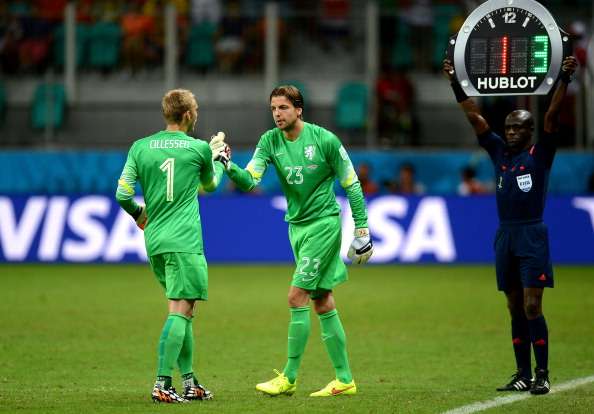
SBOBET – The ability to substitute players during a game is a cornerstone of modern sports. It’s a strategic tool that allows coaches to adapt to changing circumstances. This practice has dramatically reshaped gameplay across various disciplines.
The evolution of substitutions has a fascinating sejarah pergantian pemain. It reflects evolving tactical approaches and rule changes. Understanding this history helps us appreciate the strategic depth of contemporary sports. Join me as we delve into this significant aspect of sporting evolution.
Early Days: Limited Replacements
The earliest forms of substitutions were quite limited. These restrictions varied considerably across different sports. Often, they were only permitted due to injury. This made them more of a necessity than a tactical advantage for teams.
Football’s Initial Hesitation
In the early days of football (soccer), substitutions were rarely seen. If a player was injured and unable to continue, the team was often forced to play with one less player. This presented a significant disadvantage, impacting the overall flow. There was minimal opportunity to change tactics during the match.
The introduction of limited substitutions gradually changed this landscape. At first, only the goalkeeper could be replaced due to injury. This slowly evolved to allow substitutions for other injured players. Strategic alterations to the team were still extremely limited.
It’s worth remembering that fitness levels and endurance expectations differed greatly then. Players were generally expected to play the entire match. Therefore, substitusi wasn’t considered crucial for managing player fatigue or tactical adjustments.
Cricket’s Unique Approach
Cricket had (and still has to some extent) a unique substitution system. The concept of a “substitute fielder” existed early on. They could replace an injured player in the field but couldn’t bowl or bat. They were basically stand-ins for fielding duties.
Later on, rules evolved to allow for a “super-sub” in some forms of the game. This allowed a player to be substituted with limitations on their role. The super-sub could bowl or bat, adding a different strategic angle. This change was met with varying degrees of acceptance.
The use of substitutes in cricket continues to be a debated topic. Strategic use is carefully analyzed. The restrictions highlight the emphasis on individual contributions over entire team composition, especially in Test matches.
Read More: Sejarah Klub dengan Transfer Terburuk Sepanjang Masa
The Rise of Tactical Substitutions
As sports evolved, so did the understanding of strategy. Coaches began to realize the potential of substitutions. These could be used to influence the game’s outcome. This marked the rise of tactical substitutions. This saw use beyond mere injury replacements.
Basketball’s Fast-Paced Changes
Basketball was one of the first sports to fully embrace unlimited substitutions. This revolutionized the game. Coaches could now make rapid tactical adjustments. They could quickly swap players based on performance or matchups. This adds a layer of strategic complexity.
The ability to substitute frequently significantly impacted player specialization. Certain players became known for offense, while others focused on defense. This specialization allowed for a highly dynamic and adaptable team. The pace of the game dramatically increased.
The constant flow of players in and out of the game changed how coaches managed player fatigue. It also created opportunities for younger players to gain valuable experience. This fostered a continuous cycle of player development within teams.
Ice Hockey’s Fluid Line Changes
Ice hockey, with its demanding physical nature, utilizes frequent line changes. These are essentially a form of rolling substitution. Players rotate in and out of the game in short bursts. This keeps the intensity high and manages player fatigue.
Line changes are heavily pre-planned and based on various factors. These include game situation, player matchups, and energy levels. Coaches use these changes to maintain a consistent level of pressure on the opposing team. This creates constant challenges for defenders.
The strategic use of line changes is a crucial element of hockey tactics. It allows for a high-tempo game with frequent shifts in momentum. Effective line management is often the key to success for many hockey teams.
Read More: Bagaimana Klub Sepak Bola Memilih Sponsor Utama
Modern Substitution Rules and Strategies
Modern sports have refined substitution rules to maximize tactical flexibility. These rules are also intended to prevent abuse. Different sports have different regulations regarding the number of substitutions allowed.
The Impact on Game Strategy
Substitutions are a key element of modern game strategy. Coaches carefully plan when and how to use their available substitutions. They anticipate their opponent’s moves. The ability to react quickly and strategically is critical. This can often be the difference between winning and losing.
Coaches analyze player performance data to make informed decisions about substitutions. They track metrics like speed, stamina, and defensive effectiveness. This data-driven approach enhances the strategic value. It moves the game beyond intuition alone.
Tactical adjustments based on substitutions can shift the momentum of a game. A well-timed substitusi can inject fresh energy into the team. It can also exploit weaknesses in the opponent’s formation. The strategic depth of substitutions is remarkable.
Pergantian Ekstra and Special Cases
Some sports allow for pergantian ekstra under specific circumstances. For example, in some leagues, an additional substitution may be granted if a player suffers a concussion. These rules prioritize player safety. They provide teams with much needed flexibility.
The implementation of these additional substitution rules often varies. They depend on the specific sport and league regulations. The intention is to provide a fair and safe environment for all players. These additions consider player welfare.
These special cases highlight the ongoing efforts to balance strategic considerations. They consider safety concerns within the framework of the game. This reflects the evolving nature of sports and its commitment to its players.
Conclusion
The history of player substitutions is a testament to the continuous evolution of sports. From limited replacements to strategic maneuvers, the impact of substitutions is undeniable. Understanding this evolution enhances our appreciation. It enhances the tactical complexities of the games we love.
The introduction of substitusi has dramatically reshaped gameplay, leading to increased specialization, data-driven decision-making, and greater tactical flexibility. As sports continue to evolve, so will the rules and strategies surrounding player substitutions, further enriching the competitive landscape and prioritizing player welfare.







